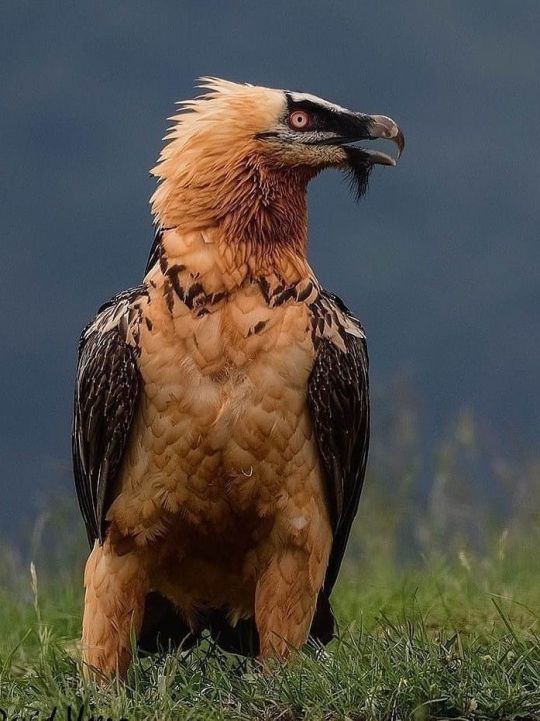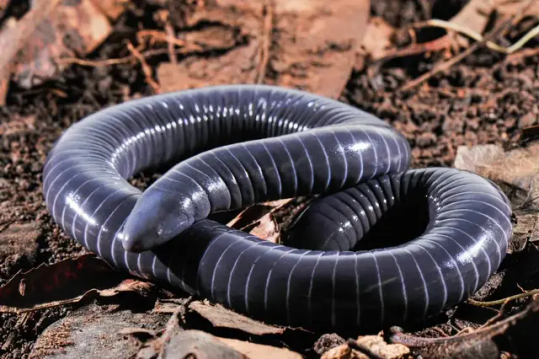Photo

Highland Bronze Poison Dart Frog
1K notes
·
View notes
Text
A nice shower and the day can begin...
42K notes
·
View notes
Text
Boat owners moving a large floating island out of the way on Wisconsin's Lake Chippewa
https://twitter.com/gunsnrosesgirl3/status/1752933191344615440
38K notes
·
View notes
Text
Correction: the bearded vulture doesn't roll in copper as stated above, which would give a blueish hue, but in puddles or soil rich in iron oxide ochre.
The Bearded Vulture is the only known animal whose diet is almost exclusively bone.

The bone-eating giant bird which coats itself minerals like copper to get its rusty hue for unknown cosmetic reasons, most likely to show dominance. The brighter the hue, the more dominant the male.
They probably need the copper because its anti-bacterial properties. useful if you’re a carrion eater.


The bird has a 9 ft wingspan.

Bearded Vultures provide an indispensable service to the ecosystem, checking the spread of disease by consuming corpses. But the bearded’s diet is 95 percent bone. It can wait for the other scavengers to strip the body clean, then stroll in at its leisure to take its fill.
31K notes
·
View notes
Text
#jacanas#birds#I fucking love them look at that weird alien mothership of a bird depositing the wee babes#I think that's the dad also
3K notes
·
View notes
Note
heya, that bearded vulture post u reblogged has an error/misinforation- they dont roll around in copper. not sure where that person got that idea from other than maybe the color? they roll in iron oxide rich soils like ochre to stain their feathers. any copper would oxidize blue.
letting you know in case youd like to add a correction or something
hey thanks for letting me know :))
4 notes
·
View notes
Text
74K notes
·
View notes
Photo

Beluga whales congregate near Somerset Island, Canada
© Robert Rosing
19K notes
·
View notes
Text
no amount of bird posts i make can ever capture how truly strange bitterns are
38K notes
·
View notes
Text
Also, the way we humans tend to think about human intelligence is not accurate to the way human intelligence actually works. We like to think that individual humans are brilliant geniuses who invent techniques like plant domestication that revolutionize the world. But the way primates and many other highly intelligent social species work is that they are only able to do things that are extremely intelligent in a group, over time, by learning from others and building on what they did.
How did we figure out selectively breeding plants? Animals make sense, but who was the one who thought "hmm, this fruit comes from this seed, like animals come from animal seed. Tall man's seed makes tall children. Spotted animals make spotted animalsm If I bury the seeds of this particularly juicy fruit, the son of this plant will be tasty as well."
770 notes
·
View notes
Text


Ringed Caecilian (Siphonops annulatus), family Siphonopidae, found in tropical South America, east of the Andes
IN RECENT NEWS (March, 2024): This species has been found to be the only known amphibian to create a nutrient rich "milk" fromt heir skins to feed the young.
The young go through the larval stage in the eggs, and hatch out as fully formed tiny caecilians.
The young of this species feed on their mother’s outer skin layer (which she sheds), which has a high nutrient content.
Like many caecilians, their skin exudes a thick slime, which aids in burrowing, but also has toxic components (presumably to protect from predation).
Caecilians are amphibians, like salamanders and frogs.
They are not worms, nor are they snakes.
They were also recently found to have venomous components to their saliva, making it the only known amphibian with a venomous bite!
photograph by Carlos Jared
2K notes
·
View notes
Text
It's Puff Grack season! I love the Grackles, and about a week after their arrival they have started to show off. Please enjoy the Grack Waltz! (Unmute for max fun!)
2K notes
·
View notes
Text
Yall we've been domesticating plants loooooooong before this guy. He lived in the 1800s. Plant domestication goes back to the Neolithic period.
According to wikipedia, "The practice is estimated to date back 9,000-11,000 years. Many crops in present-day cultivation are the result of domestication in ancient times, about 5,000 years ago in the Old World and 3,000 years ago in the New World."
Plant domestication was not invented by white Europeans and the idea is honestly laughable. Look at this map! Also courtesy of wikipedia. The map is very incomplete but gives you a better sense of the fact that where there were humans they were domesticating their plants.

How did we figure out selectively breeding plants? Animals make sense, but who was the one who thought "hmm, this fruit comes from this seed, like animals come from animal seed. Tall man's seed makes tall children. Spotted animals make spotted animalsm If I bury the seeds of this particularly juicy fruit, the son of this plant will be tasty as well."
770 notes
·
View notes
Video
thedragonwoodconservancy on ig
252K notes
·
View notes
Text
Poor old grizzly bear not a fan of a fan of thunder and lightning.
37K notes
·
View notes